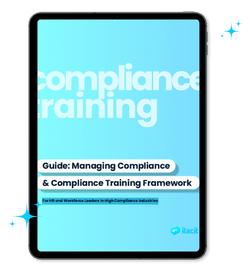To effectively manage a frontline workforce, it is imperative to establish effective communication and engagement. A significant number of organizations utilize Staffbase to ensure that their teams are informed and connected.
However, Staffbase may not be suitable for all organizations, especially those with unique requirements. Regardless of whether it is due to cost, a lack of features, or any other factor, certain enterprises may pursue alternatives.
In the following article, we will investigate a variety of alternatives to Staffbase that may be more suitable for the needs of your organization.
Staffbase: An Overview
Staffbase was established in 2014 in Chemnitz, Germany by Martin Böhringer, Frank Wolf, and Lutz Gerlach.
Staffbase’s founders acknowledged that a unified platform was lacking in many companies, particularly those with non-desk employees, to communicate and engage their workforce. Staffbase was created as a mobile-first platform to address this divide, providing organizations with the ability to communicate effectively with their entire workforce, irrespective of their location.
Staffbase has experienced substantial growth since its inception, resulting in the expansion of its client base and product offerings. Today, it is a prominent player in the internal communication sector, providing services to a diverse array of industries worldwide.
An all-in-one solution for companies seeking to enhance employee satisfaction and expedite communication, Staffbase offers a comprehensive suite of features.
Key Features of Staffbase
- Employee App with Intranet Features: Staffbase provides an intuitive employee application that incorporates intranet capabilities, enabling employees to access critical information and resources from a single, user-friendly interface.
- Targeted Communication Tools: The platform facilitates precise communication, thereby enabling organizations to communicate pertinent information to specific groups within the organization. This ensures that employees receive information that is pertinent to their roles.
- Analytics and Feedback Mechanisms: Staffbase offers comprehensive analytics and feedback tools that assist organizations in quantifying engagement levels and obtaining insights into employee sentiment. This data can be used to make informed decisions about internal communication strategies.
Why Choose Staffbase?
- Strong Focus on Employee Engagement: At the heart of Staffbase’s design is employee engagement. The platform’s features are designed to foster a more motivated and connected workforce, which can result in increased productivity and employment satisfaction.
- Customizable and Scalable for Large Organizations: The Staffbase platform is highly customizable, enabling organizations to cater it to their unique requirements. This solution is also scalable, rendering it appropriate for large enterprises that require a comprehensive solution for their internal communication requirements.
Why Businesses Might Consider Alternatives to Staffbase?
- Cost Considerations: Despite the extensive array of features that Staffbase provides, its pricing may be a source of concern for certain organizations, particularly those with restricted budgets or smaller enterprises. The benefits of the platform may be outweighed by the cost of its implementation and maintenance for these companies.
- Feature Set: Although Staffbase is a comprehensive platform, it may not offer every feature that a business requires. In some cases, organizations may require more sophisticated analytics, improved integration with existing tools, or supplementary customization options that Staffbase does not offer.
- Customization and Setup: Setting up Staffbase and customizing it to fit specific organizatialternatonal needs can be time-consuming. In certain instances, businesses may discover that the customization options offered by Staffbase are insufficient to meet their specific requirements, prompting them to explore alternative options.
Top 5 Staffbase Alternatives in 2025
Choosing the proper alternative to Staffbase may be difficult, particularly considering the unique demands of each firm. Nevertheless, we have conducted a comprehensive investigation and have identified the top five alternatives that may be a more suitable option for your business.
The following criteria were taken into account in our analysis:
- Features: We looked for platforms that provide robust internal communication tools, employee engagement features, and unique offerings tailored to various industries. Key features considered include the capacity to provide targeted messaging, support mobile employees, and provide analytics to monitor engagement.
- Pricing: Cost is always a factor; however, our primary concern was the comprehensive value that each platform offers. We investigated whether the pricing is justified by the features, particularly for businesses that necessitate advanced or specialized functions.
- User Experience: Ease of use is critical, especially for platforms intended for a diverse workforce. We prioritized solutions that are user-friendly, provide intuitive interfaces, and guarantee a seamless setup process.
- Integration Capabilities: We assessed the degree to which each platform seamlessly integrates with current business tools, including payroll systems, HR software, and other critical applications.
- Security and Compliance: Protecting sensitive data and meeting industry regulations are top priorities. We prioritize the protection of sensitive data and the compliance with industry regulations.
- Customer Support: Quality customer support can significantly impact the overall experience with a platform. We conducted an analysis of the support teams’ availability, responsiveness, and expertise, with a preference for those that provided exceptional service.
- Customer Feedback: Finally, we reviewed user testimonials and feedback to gauge overall satisfaction. Platforms that had a substantial number of positive evaluations and contented users were prioritized.
Based on these factors, here are the five best Staffbase alternatives for 2025:
| Feature/ Platform | Staffbase | iTacit | Beekeeper | Workplace from Meta | Microsoft Teams | Jostle |
|---|---|---|---|---|---|---|
| Primary Focus | Employee Engagement & Internal Comms | Frontline Worker Engagement & Compliance | Mobile-First Frontline Communication | Social Networking & Community Engagement | Communication & Collaboration | Simple Intranet & Employee Interaction |
| Key Features | Employee App, Intranet, Analytics | Internal Comms, Task Mgmt, Compliance | Mobile-first Comms, Task Mgmt, Shift Sched. | Social Media Interface, Live Video | Integrated with Microsoft 365, Video Conf | Intranet, News, Employee Directory |
| Customization | Scalable, Customizable | Industry-Specific, Limited to Certain Industries | Basic, Mobile-Focused | Limited Customization | Extensive within Microsoft Ecosystem | Minimal, Focus on Ease of Use |
| Pros | Strong Employee Engagement, Scalable | Compliance Tools, User-Friendly Interface | Strong Mobile Support, Easy for Frontline Workers | Familiar Interface, Easy to Use | Robust Security, Microsoft Integration | Simple Setup, Easy to Use |
| Cons | Requires More Setup Time | Limited to Certain Industries | Limited Customization Compared to Staffbase | Privacy Concerns, Limited Customization | Can Be Complex for Non-Microsoft Users | Basic Features, Limited Customization |
| Best For | Large Organizations | Companies Prioritizing Compliance & Communication | Companies with a Large Frontline Workforce | Organizations Seeking Social Engagement Tools | Microsoft 365 Users, Security-Focused | Small to Mid-Sized Orgs Needing Simple Intranet |
| Pricing | Per User, Based on Features | Industry-Specific, Contact for Pricing | Tiered, Based on Features | Per User, Based on Features | Subscription via Microsoft 365 | Per User, Based on Features |
1. iTacit
Tacit is a dedicated platform for frontline worker management, with powerful features for communication, task management, and compliance. iTacit is designed to address the demands of sectors that need direct communication and regulatory compliance. It helps firms simplify operations, assure certification, and retain engagement with their frontline personnel.
Key Features:
- Internal Communication Tools: iTacit enables organizations to send targeted messages directly to their frontline workers. On top of this, iTacit also offers comprehensive communication features.
- Task Management and Tracking: Task management tools are integrated into the platform, which enables managers to assign, monitor, and track tasks in real time. This ensures that duties are completed efficiently and streamlines workflows.
- Compliance and Certification Management: In terms of compliance management, iTacit really shines. Its features make it easy for businesses to manage their training programs, keep tabs on personnel certificates, and check that everyone is following industry standards.
- Integration with Existing Systems: iTacit seamlessly integrates with many popular HR and business systems. This allows for the efficient flow of data and minimizes the necessity for manual input.
iTacit as a Staffbase Alternative: Pros and Cons
Pros of iTacit:
- Tailored for Frontline Workers: iTacit is specifically planned to meet the requirements of frontline personnel. Its features simplify the process of maintaining awareness and adhering to standard industry practices.
- Robust Compliance Features: With the platform’s robust compliance features, organizations can effortlessly handle certifications, training, and regulatory obligations.
- User-Friendly Interface: Even employees with minimal technological expertise can utilize iTacit’s intuitive interface.
Cons of iTacit:
- Limited to Specific Industries: iTacit is ideal for businesses that prioritize compliance. Companies who do not operate in these heavily regulated sectors, on the other hand, may not benefit from this.
Comparison to Staffbase:
- iTacit’s focus on frontline workers and compliance offers a distinct advantage over Staffbase’s broader approach to employee engagement.
- While Staffbase provides a wide range of features for overall employee communication, iTacit’s specialized tools are better suited for industries requiring strong compliance and direct communication with frontline teams.
- For organizations in regulated sectors, iTacit’s emphasis on compliance management can be more appealing than Staffbase, which may lack the depth of compliance features needed in these industries.
Who Should Use iTacit:
iTacit is ideal for companies that prioritize compliance and need direct communication tools tailored for their frontline teams. Businesses in sectors with stringent regulatory requirements and critical frontline employees, including healthcare, manufacturing, and logistics, will find the specific features of iTacit to be particularly advantageous.
2. Beekeeper
Beekeeper is a platform that is specifically tailored for organizations with a substantial frontline personnel. Through a mobile-first approach, the utility is designed to improve communication, thereby simplifying the process of staying informed and connected for frontline workers.
Key Features of Beekeeper
- Mobile-First Communication: Beekeeper prioritizes the facilitation of communication through mobile devices, guaranteeing that operational personnel can effortlessly access critical information and pertinent updates.
- Task Management and Shift Scheduling: The platform offers tools to manage tasks and schedule shifts, which is essential for organizations with dynamic work environments.
- Analytics and Reporting: Organizations can monitor the effectiveness of communication and workforce engagement by utilizing Beekeeper’s analytics and reporting capabilities.
- Integration with Workplace Tools: The platform can be seamlessly incorporated with other workplace tools, thereby facilitating a more efficient workflow.
Beekeper as a Staffbase Alternative: Pros and Cons
Pros of Beekeeper
- Strong Mobile Support: Frontline workers who predominantly rely on smartphones will find Beekeeper’s mobile-first design to be particularly user-friendly.
- Ease of Use: Extensive training is not necessary for frontline personnel to adapt to Beekeper, since it is specifically intended to be intuitive.
Cons of Beekeeper
- Limited Customization: Compared to Staffbase, Beekeeper offers fewer customization options, which might be a limitation for organizations needing tailored communication tools.
Comparison to Staffbase
- Mobile-Centric vs. Comprehensive Platform: Beekeeper’s mobile-centric methodology is more suitable for organizations that prioritize mobile communication as their principal mode of interaction. In contrast, Staffbase provides a more comprehensive array of features, such as an intranet and analytics, which render it more appropriate for organizations that require involvement from their entire workforce, rather than just mobile employees.
- Task Management and Shift Scheduling: Beekeeper is particularly advantageous for industries such as healthcare and retail due to its exceptional capabilities in shift scheduling and task administration. Staffbase, despite its exceptional communication skills, does not specialize in these areas, which makes Beekeeper the superior option for businesses that require comprehensive scheduling tools.
- Customization: Staffbase offers a much wider range of customization options, which is essential for larger organizations with intricate requirements. Beekeeper, on the other hand, offers more restricted customization. This could potentially be a constraint for organizations that have distinctive communication requirements.
Who Should Use Beekeeper
- Organizations with Large Frontline Workforces: Beekeeper is most appropriate for organizations that have a substantial number of frontline employees who require mobile-first communication tools. This comprises sectors such as healthcare, hospitality, manufacturing, and retail.
- Businesses Prioritizing Mobile Communication: If mobile communication is a top priority, Beekeeper’s design and features make it an excellent choice. The platform is built to ensure that information reaches employees quickly and efficiently, regardless of where they are located.
- Industries with Dynamic Work Environments: For industries where shift scheduling and task management are critical, Beekeeper’s specialized features provide an edge. This platform is great for companies that operate in fast-paced situations since it can handle all of these factors efficiently.
3. Workplace from Meta
Workplace, a communication platform from Meta, is intended to introduce the familiarity of social media to the corporate environment. It emulates the visual and tactile experience of Facebook, therefore enhancing its intuitiveness for users who are already familiar with social networking technology. This familiarity may help with the adoption process and increase user engagement across teams.
Key Features
- Familiar Social Networking Interface: Workplace’s design is similar to that of Facebook, complete with news feeds, groups, and instant messaging. This familiarity makes it easy for employees to connect, share updates, and collaborate.
- Live Video Broadcasting: The platform enables live video broadcasts, which are a potent tool for real-time updates from leadership, company-wide announcements, and training sessions.
- Integration with Office 365 and Other Tools: Workplace seamlessly integrates with a variety of CRM systems, Office 365, and Google Workspace, ensuring that it is compatible with existing workflows without any disr
Workplace as a Staffbase Alternative: Pros and Cons
Pros of Staffbase:
- User-Friendly Layout: Most users are accustomed to the social media-style interface, which facilitates active participation and minimizes the learning curve.
- Strong Engagement Features: Workplace’s engagement features, including chat, live video, discussion groups, etc., may help teams remain connected and informed.
Cons of Staffbase:
- Limited Customization: Though the platform is user-friendly, Workplace provides relatively limited customization options. This can be a disadvantage for organizations that have specific requirements or necessitate more customized solutions.
- Privacy Concerns: Meta’s data policies can raise concerns, particularly for organizations that prioritize privacy and data security. The association with Facebook’s broader ecosystem might make some companies wary about using Workplace for sensitive communications.
Comparison to Staffbase
Social Interface vs. Employee Engagement Tools: Workplace from Meta focuses on social networking, making it great for fostering casual, open communication. It does not, however, possess the exhaustive engagement tools of Staffbase. By offering targeted messaging, feedback mechanisms, and analytics, Staffbase offers a more structured approach to employee communication and engagement.
Who Should Use Workplace from Meta
Workplace from Meta is ideal for companies looking to implement a social media-style communication platform. It is appropriate for organizations that prioritize informal, open communication and wish to capitalize on the potential of social networking within their workforce. It’s especially useful for businesses with younger, tech-savvy employees who are familiar with social media platforms.
4. Microsoft Teams
Microsoft Teams is a communication and collaboration platform that is extensively utilized and is tightly incorporated with Microsoft 365. Teams provides a diverse array of tools to facilitate effective collaboration among organizations, with the objective of streamlining workplace communication.
Key Features of Microsoft Teams
- Integration with Microsoft 365: Teams seamlessly connects with Microsoft 365, making it easier to access tools like Word, Excel, and Outlook without leaving the platform.
- Video Conferencing and Chat: Specifically for hybrid and remote work environments, Teams provides exceptional video conferencing capabilities like chat, screen sharing, and meeting scheduling.
- File Sharing and Collaboration: Users are able to share files and collaborate in real-time with Teams, which simplifies the process of working together on projects, irrespective of their location.
Microsoft Teams as a Staffbase Alternative: Pros and Cons
Pros of Microsoft Teams:
- Seamless Microsoft Integration: Organizations that have already invested in Microsoft 365 will greatly benefit from Teams’ natural integration with Microsoft’s other tools and solutions.
- Strong Security Features: Microsoft Teams benefits from Microsoft’s security infrastructure, offering strong data protection and compliance features.
Cons of Microsoft Teams:
- Complexity for Non-Microsoft Users: Teams can be difficult to navigate for users who are not accustomed with Microsoft products, necessitating additional training and support.
- Overwhelming Features: The extensive range of tools and features can be overwhelming for some users, particularly those who need only basic communication tools.
Comparison to Staffbase
- Collaboration Strengths: Excelling in collaboration, Microsoft Teams provides an extensive selection of tools for project administration, file sharing, and team communication.
- Employee Engagement: Staffbase, on the other hand, is tailored for employee engagement. It is equipped with features such as analytics, feedback mechanisms, and targeted messaging that are intended to engage and address employees throughout an organization. Staffbase offers more specialized tools for nurturing engagement and connection among employees, whereas Teams can facilitate communication.
Who Should Use Microsoft Teams?
Microsoft Teams is best suited for:
- Organizations Already Using Microsoft 365: If your organization is already integrated into the Microsoft ecosystem, Teams provides a seamless integration that can improve productivity.
- Businesses Needing Robust Collaboration Tools: For companies that prioritize collaboration and project management, especially in remote or hybrid settings, Teams provides a comprehensive suite of tools.
- Large Enterprises: Teams is particularly effective for large organizations that require strong security, compliance features, and the ability to manage large-scale communication and collaboration efforts.
5. Jostle
Jostle is an intranet platform that leverages a user-friendly and uncomplicated interface to improve employee engagement. A uncomplicated internal communication solution is an excellent choice for businesses due to the user-friendliness of its design.
Key Features of Jostle
- User-Friendly Intranet Interface: Jostle’s intranet is intended to be user-friendly. Employees can navigate and operate the platform with minimal training.
- Employee Directory and Social Interaction: The platform includes a comprehensive employee directory, fostering better connections and social interactions within the organization.
- News and Announcements: Jostle makes it simple to distribute corporate news, updates, and announcements, keeping everyone informed and united.
Jostle as a Staffbase Alternative: Pros and Cons
Pros of Jostle:
- Simple Setup and Ease of Use: Due to its uncomplicated design, Jostle can be configured rapidly and effortlessly, without necessitating substantial technical assistance. This is especially beneficial for companies with limited IT resources.
- Quick Implementation: The platform’s simplicity facilitates rapid deployment, allowing organizations to begin utilizing it almost immediately after purchase.
Cons of Jostle:
- Limited Customization: Although Jostle is user-friendly, it provides fewer customization options in comparison to more feature-rich platforms. This could be a constraint for organizations that have specific requirements or necessitate more customized communication tools.
- Basic Features: Jostle’s focus on simplicity means that it may lack some advanced features that other platforms offer, which could be a drawback for larger organizations with more complex requirements.
Comparison to Staffbase
- Simplicity vs. Rich Features: Jostle is an exceptional option for smaller organizations or those seeking a straightforward intranet solution due to its simplicity and ease of use. It offers the essentials in a user-friendly format, as to prevent users from being inundated with an excessive number of options.
- Ease of Use vs. Customization: Jostle is ideal for businesses who value a simple, fast setup because of its unparalleled simplicity of use. In contrast, Staffbase is more intricate to configure, despite providing a greater degree of customization.
Who Should Use Jostle?
If your company is small to medium-sized and needs an easy intranet solution, Jostle is a great choice. It is an exceptional option for organizations that require straightforward setup, user-friendliness, and rapid implementation to improve internal communication without the complexity of more sophisticated platforms. However, Jostle may not be sufficient for organizations that require a more feature-rich or customizable solution.
Wrapping Up
This article compares five leading competitors to Staffbase, each of which offers something special:
- The hallmark of iTacit is its emphasis on compliance and communication among frontline workers.
- Beekeeper offers a mobile-first approach.
- Workplace from Meta excels in social networking and community engagement.
- Microsoft Teams is an effective solution for individuals who are already fully integrated into the Microsoft ecosystem.
- Jostle provides a straightforward intranet solution for smaller organizations.
Among these options, iTacit stands out as the top alternative, especially for companies where compliance and direct communication with frontline teams are critical. Its specialized tools and user-friendly interface make it a strong contender for organizations in regulated sectors.
Consider your organization’s specific needs and priorities. If compliance and effective communication with your frontline personnel are of the utmost importance, it is worth investigating iTacit in greater detail.










